The Corsair Carbide 600Q Case Review: Upside Down But Right On
by E. Fylladitakis on September 12, 2016 8:30 AM EST- Posted in
- Cases/Cooling/PSUs
- Corsair
- ATX
- E-ATX
The Interior of the Corsair Carbide 600Q
The removal of the case’s panels reveals a simple but very interesting interior, with an inversed motherboard tray, meaning that the motherboard is literally upside down. Corsair based this design on the simple concept that the cool air sinks towards the bottom of the case, making the front and bottom fans more effective as intakes and the rear fan more effective as an exhaust. Furthermore, it allowed the designer to seal the top of the case, significantly improving its acoustics performance.
Cleverly, the designer moved the PSU compartment to the top of the case, putting it at the same height as the 5.25" drive bays. As the PSU is much shorter than other system components, such as the motherboard and long GPU cards, moving the PSU and drive bays above the motherboard allowed the designer to greatly shorten the case without having to worry about hardware compatibility problems.
With the exception of the cooling fan blades, everything inside the Carbide 600Q is black. The metallic parts are sprayed with the same satin black paint as with the exterior of the case, as are most of the plastic parts as well. The only exception is the cover of the PSU compartment, which has been treated with a matte varnish finish. One 140 mm intake and one 140 mm exhaust fan are pre-installed inside the Carbide 600Q, with one more 140 mm fan supplied as an extra.
There is a very large opening on the motherboard tray for the installation of aftermarket CPU coolers, so large that it will extend beyond the boundaries of a Flex-ATX or smaller motherboard. Only a full ATX or Extended ATX motherboard will fully cover the opening. Large openings with rubber grommet coverings for the routing of cables can be seen to the left and above the motherboard area. Two narrow but long openings can be seen below the motherboard, without any grommets installed.
Corsair moved all of the drives to the left side of the case, behind the motherboard tray. Two 3.5” drives can be installed in the slots found beneath the PSU compartment, on plastic trays. These plastic trays can also accommodate 2.5” drives, if required. Three plastic 2.5” drive cages can be seen directly behind the motherboard, allowing the quick and tool-less installation of devices.
To take a look at the case with a finished build inside it, we installed a Corsair AX760i with the red cable set, for strong visual contrast. The AX760i easily fits inside the PSU compartment of the Carbide 600Q, with plenty of room for managing the cables. There is also a massive 28 mm clearance behind the motherboard tray, allowing for the easy routing of cables. The distance between the PSU and the motherboard’s CPU power header is long though, and the EPS power cable could only reach our system’s connector via a straight line, going right above the installed 2.5” drive. Extenders will definitely be necessary for PSUs with shorter cables.
The system area of the Carbide 600Q is very spacious considering the volume of the case. There is a significant clearance between the motherboard and the bottom of the case, allowing for the installation of liquid cooling radiators. We would recommend not installing radiators wider than 30 mm, as they could interfere with the motherboard’s components. The space in front of the motherboard allows for cards up to 370 mm long to the installed, but this distance will be shortened if there is a liquid cooling radiator installed at the front of the case. Users who prefer air coolers should not have to worry, as the case is very wide and there is a significant clearance between the CPU area and the bottom of the case, allowing compatibility with nearly all of the air coolers currently available.
One minor problem about the Carbide 600Q, but one that users checking the windowed 600C version should definitely consider, is that nearly all of the modern hardware has been aesthetically designed with normal orientation in mind. The inverse design will cause designs, logos, and labels to be upside down, much like it does for the chipset heatsink and the GPU cooler labels of our showcase system. This is of no real consequence inside the opaque 600Q, but it will be a serious aesthetics issue for modders trying to build a visually pleasing system inside the windowed 600C.


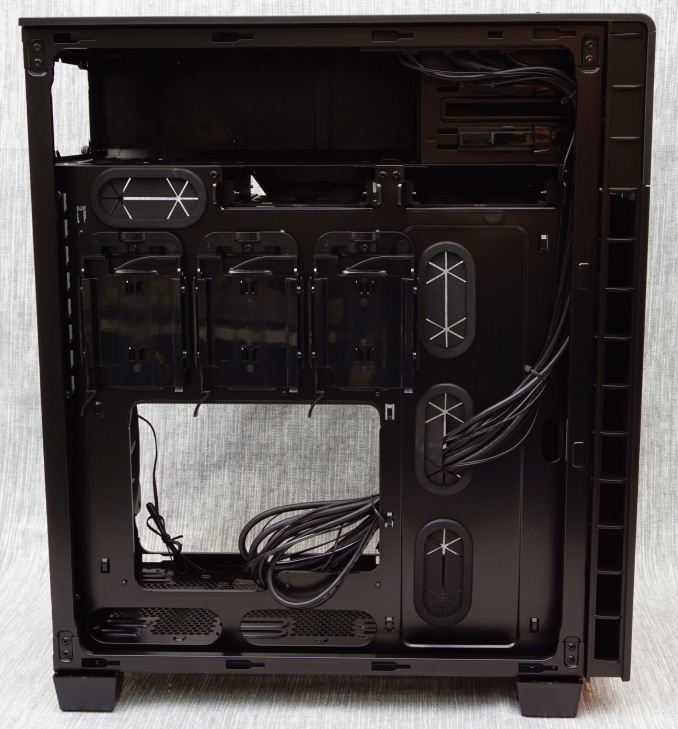

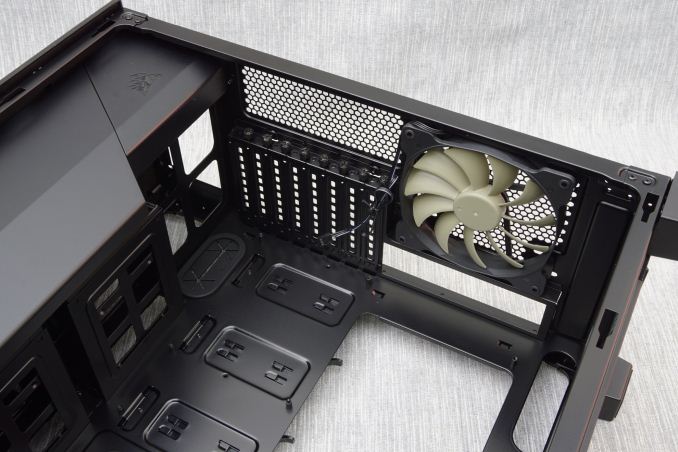
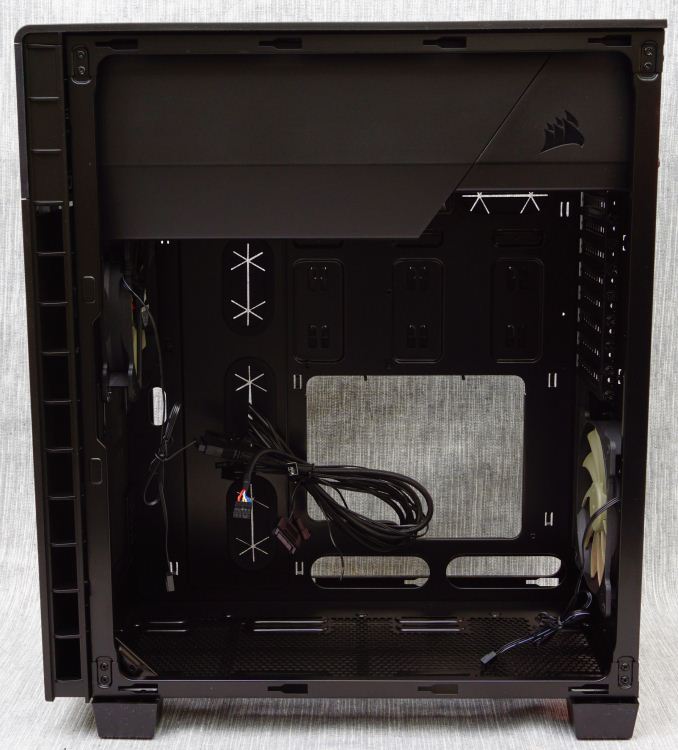
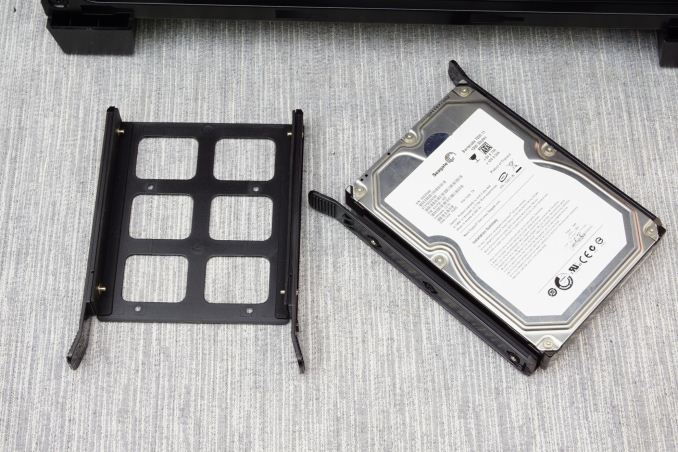
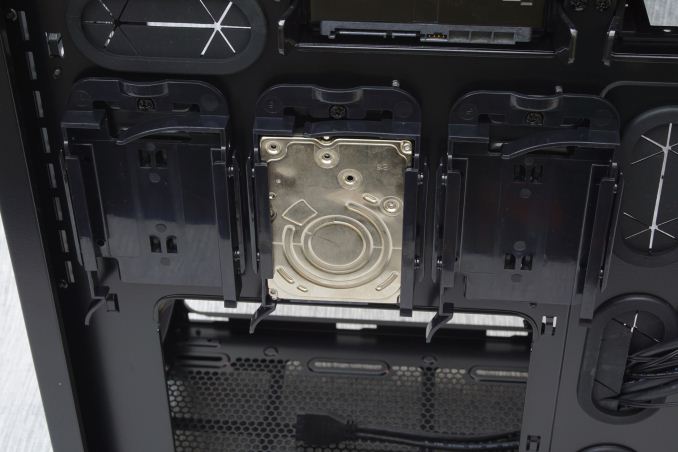

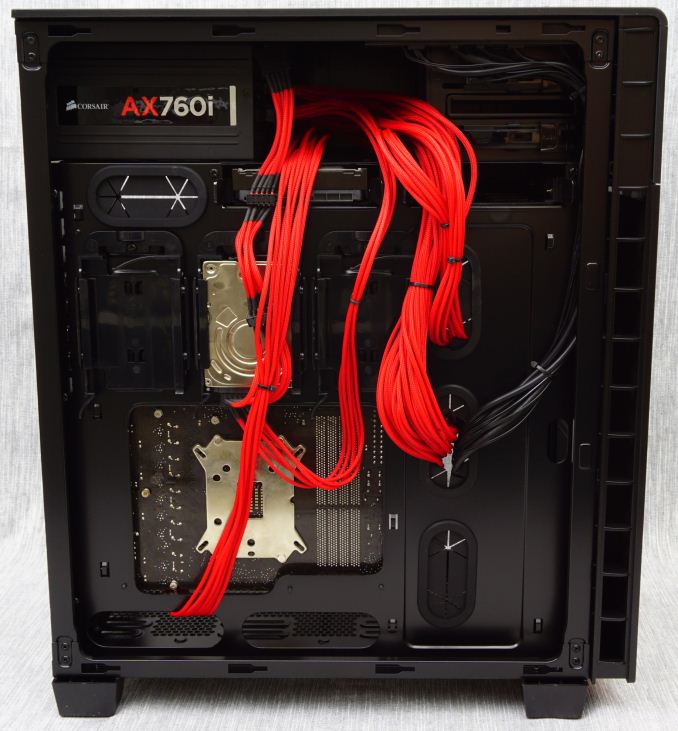








46 Comments
View All Comments
BrokenCrayons - Monday, September 12, 2016 - link
"Cleverly, the designer moved the PSU compartment to the top of the case..."My mid-1990s Packard Bell and and early 2000s eMachine are rolling over in their respective graves over the idea of a top-mounted PSU being considered a clever idea in 2016.
dsraa - Monday, September 12, 2016 - link
So am I, I hate that all the newer cases have the PS at the bottom for 'structural integerity' or some sh*t. It logically makes sense to put it at the top, and keep the mobo at the bottom, so that the front case fan can just blow air straight over it, to be grabbed by the rear case fan......so simple!!!TetsuoS2 - Monday, September 12, 2016 - link
It's not that simple, for cubes and large cases, like this, a top mounted psu is fine and dandy since the psu isn't likely to be heavier than the case, but a top-mounted psu makes cases top heavy, and that makes it easier to fall over. That is simply how center of gravity works.damianrobertjones - Monday, September 12, 2016 - link
...Then don't smash into your case or put it under the desk? The force required would most likely topple a case with the PSU at the bottom as well.smartthanyou - Monday, September 12, 2016 - link
Nope, you are wrong.Ancillas - Monday, September 12, 2016 - link
And all it takes is one kid running in a bit too fast...MadAd - Monday, September 12, 2016 - link
Well who needs a hulking great ATX case if its going to be empty? Of course itll be top heavy then. For someone who can actually fill it itll be much more stable.Generally tho, who cares if its the other way around if theres enough airflow room to sleep a cat left over in either design? Really sucks constantly seeing reviews for cases way too big for anyone without extensive water, 3+ video or a mini HDD datacentre going on.
AnnonymousCoward - Saturday, September 17, 2016 - link
> Well who needs a hulking great ATX case if its going to be empty?To fit a huge GPU, huge CPU cooler, and silent 140mm fans.
JoeyJoJo123 - Monday, September 12, 2016 - link
There's more to it than just having the front intake fans in-line with the CPU and exhaust fans.The biggest component to traditional aircooling PCs (as opposed to watercooled PCs) is the proximity of the fans to the hot parts in the builds, the CPU and GPU. This leads to cases like the FT02 still remaining as one of the best aircooling PC cases on the market, just because it comes with 3 thick 180cm fans in very close proximity to the GPU and CPU areas.
The PSU being top-mounted or bottom-mounted has little to do with the overall cooling performance of the case. Today, it just makes more sense to put the heavy PSU on the bottom of the case (so the case remains stable) and elevating the case up using rubber feet so the PSU can intake fresh air from near the ground, as opposed to sharing the warm exhaust air floating inside the case, and expecting the PSU to act as an extra exhaust outlet for excess heat in the case.
Even if you were to say that old-style cases were "better" designed, the intake fan (of which in many cases there was only one typically small fan, not multiple) the intake fans lost all their air pressure as it tried to get air past the hard drive cage area, and without that air pressure (lost due to obstacles and distance) the cooling performance degrades.
Cases in general have tradeoffs. Even with the FT02, the tradeoff is you're forced to have to get a full-tower sized case, with very tall "feet" to get fresh air from the ground, and an awkward top I/O plate that's annoying to remove whenever you want to plug something in, or looks bad if it's simply left off. Otherwise, it performs admirably. Modern cases balance these tradeoffs and are typically rather quiet and perform rather well, along with having good features for hiding excess PC build mess, such as elevated motherboard trays for routing power cables and rear-mounted SSDs, etc.
This case takes a different approach, so there's different tradeoffs, but I don't necessarily think it's any better than the traditional modern-style cases we have.
SunLord - Monday, September 12, 2016 - link
I love my FT02 I just wish Silverstone would make a true replacement for it even a tweaked version that removes 2 or 3 5.25" as 5 is a waste of space and raise up the current drive bays along with making it a little wider allowing for more spacing behind the motherboard tray. It would also be nice if they made the top cover bigger or less restrictive even as running 3 DP and 1 HDMI cable along with all of the other cables a high end system can have is annoying.